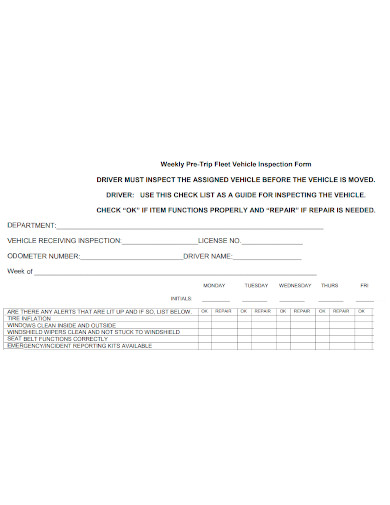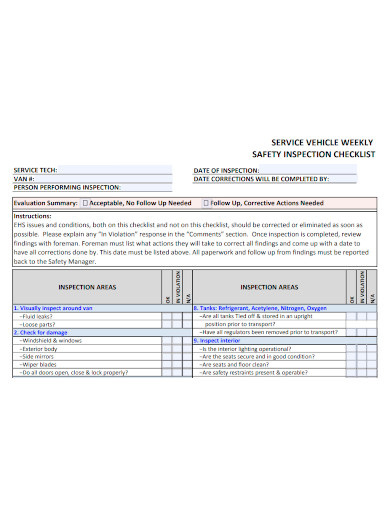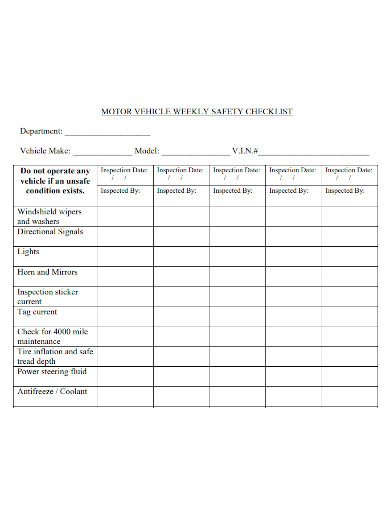U.S. statistics show that around 38,000 people die every year in the U.S. due to car accidents, with a fatality rate of 12.4 deaths per a hundred thousand inhabitants, and an additional 4.4 million who are injured enough to require immediate medical attention. Although the leading factors of these accidents are speeding and traffic distractions, the possibility of an accident due to poor vehicle maintenance is still up there. When a car is poorly maintained, a driver is more likely to suffer from bigger problems than there already is, and has quite the chance to even be involved in a fatal car accident.
Owning a car is a huge responsibility. One of the biggest parts of having your own vehicle is keeping it maintained and in tiptop shape. A well maintained vehicle ensures that you don’t spend a whole lot of money for long term repairs, and helps avoid the risk of ending up with a car that’s going to leave you stranded in the middle of the freeway. And of course, we don’t expect every car owner to know everything about cars, most of the time you’d just leave that to your local mechanic right, and that’s really perfectly fine, nothing wrong with that. But having just enough knowledge about basic vehicle troubleshooting and maintenance should help you save a couple of dollars from having your mechanic deal with small repairs. If that sounds great to you, I recommend doing a routine inspection of your vehicle in a specific amount of time. Like every week. These routine inspections should be enough to make your car last for a significant amount of time without having the need to visit your mechanic. The best way to do this, is by establishing a weekly vehicle inspection checklist. Take a look at these samples listed below, to get a pretty good idea of what this checklist looks like and you could even use them today, right now. If you’re a mechanic and you want to develop your own checklist, then you can use these samples as a guide or even as a template for your own.
4+ Weekly Vehicle Inspection Checklist Samples
1. Weekly Vehicle Inspection Checklist Sample
2. Weekly Pre-Trip Fleet Vehicle Inspection Form
3. Weekly Service Vehicle Inspection Checklist
4. Weekly Motor Vehicle Inspection Checklist
What Is a Weekly Vehicle Inspection Checklist?
Vehicle inspection checklists let you assess the condition of your car on your own. It should help you identify various mechanical flaws or problems by providing an outline of a certain component and what its optimal status should be. It also provides you a proper description of how to troubleshoot the component should there be any sort of issue. It’s a pretty crude explanation, but that’s just basically what it is. Gives you a description of a component’s proper optimal state and provides descriptions on how to revert it to its optimal state. It’s pretty simple, right? Professional mechanics also use the checklist to have a guideline of what the proper performance should be, and to keep track of the components that need repairs. All in all, its a pretty important too to ensure not just the safety of the driver and pedestrians, but also help car owners cut additional maintenance costs while still able to keep their vehicles in perfect shape.
How to Create a Weekly Vehicle Inspection Checklist
Creating your own checklist usually means that you are perfectly knowledgeable about your own vehicle or just vehicles in general. You have to be able to know every part of your car and how everything should work. If that’s not the case, then we don’t blame you. We can’t exactly expect every car owner to know that much about cars. We suggest you ask a checklist from your local mechanic, or use the templates we have provided above. Otherwise, I urge you to stick around, for I will be providing pointers and key components that you have to include in your vehicle inspection checklist.
- Contact details and information
It is important to have the contact details and information of whoever is in-charge of the inspection present in your checklist. Information such as name, contact numbers, and their signature. If you did the inspection on your own then you should put your basic information as well. - Identification
Aside from the details that you have included, it is also important to reflect the inspector’s ID. Driver’s license, government issued ID, registration, the works. - Specify the vehicle’s details
There are countless vehicle types and model around the world. Consequently, these have different specifications. So it’s important to specify what vehicle you are dealing with here, to match every part of component that has to be repaired or replace. - Main inspection
This is the main part of your checklist, because this section is the checklist itself. Here are some of the most basic procedures that you have to include in your inspection.- Engine oil check
- Battery check
- Headlight and signal lights
- Tire treads check
- Windshield wipers check
- Belts in and around the hood
- Make sure emission sticker is up to date
- Brake and rearview lights
- Brake test
And that should cover just about everything. Remember that there may be components that are not here, since these are pretty much only the basics, and that the additional components heavily depend on the type and model of your vehicle.
FAQs
Why is a vehicle inspection important?
The most obvious reason to keep your vehicle in check is for safety reasons.
What is a daily routine check?
Daily routine checks are regular inspections that should cover fluid levels; engine oils, brakes, clutch, power steering, and transmission.
How do I know if my car needs maintenance?
There are 4 critical signs that your car needs immediate service. The Check Engine light. Bad vibrations. Bad smell. Smoke.
Having your own vehicle takes a whole lot of responsibility. Making sure that it’s perfectly maintained don’t just keep you safe, but also the people around you as well. It should also be able to lift off some of that maintenance finances off of your back.
Related Posts
FREE 16+ Sample Daily Checklists
FREE 16+ Inspection Worksheet Templates
FREE 13+ Sample Daily Checklists
FREE 11+ Sample Inspection Reports
FREE 11+ Sample Inspection Reports
FREE 9+ Sample Home Inspection Forms
FREE 7+ Equipment Checklist Samples
FREE 18+ Restaurant Checklist Samples & Templates
FREE 15+ HR Checklist Samples
FREE 13+ Compliance Checklist Samples and Templates
FREE 10+ Agreement Checklist Templates
FREE 4+ Interruption Checklist Samples
How to Create a Checklist [ With Samples ]
Selling a Business Checklist [ With Samples ]
Checklist for Harassment Investigations [ Factors, Examples ]




